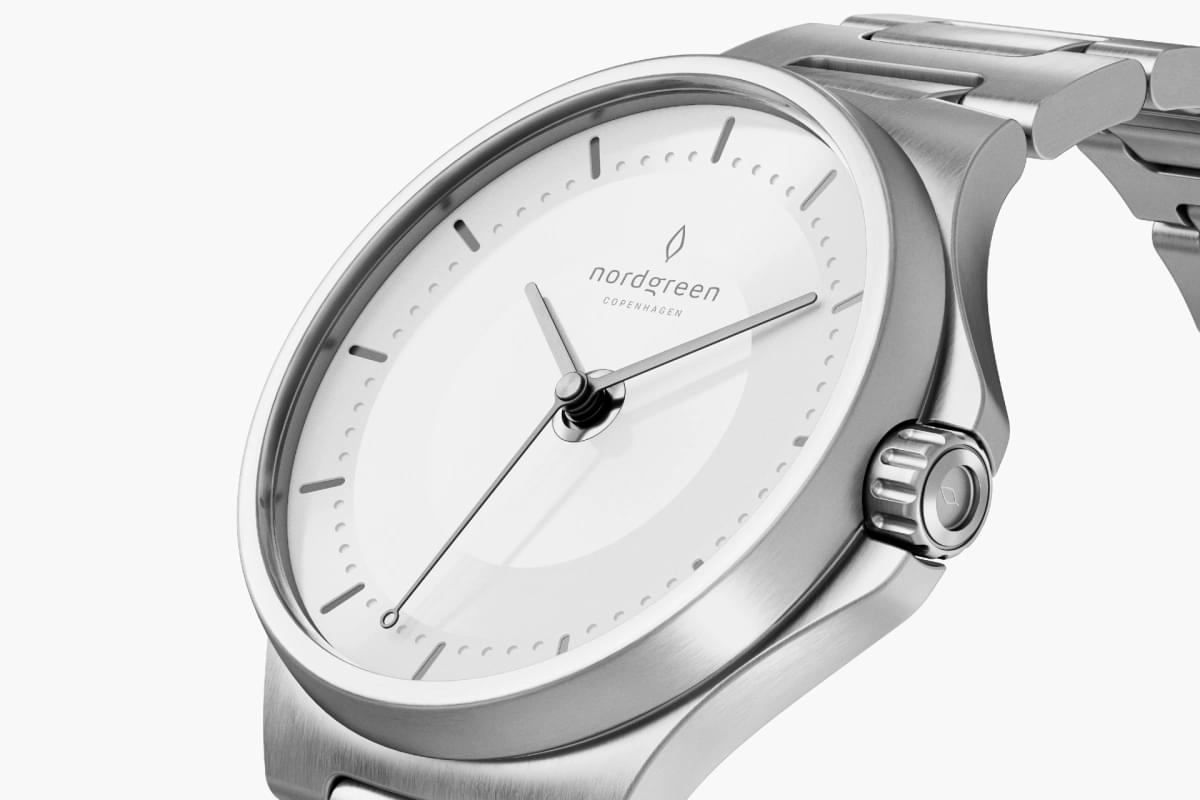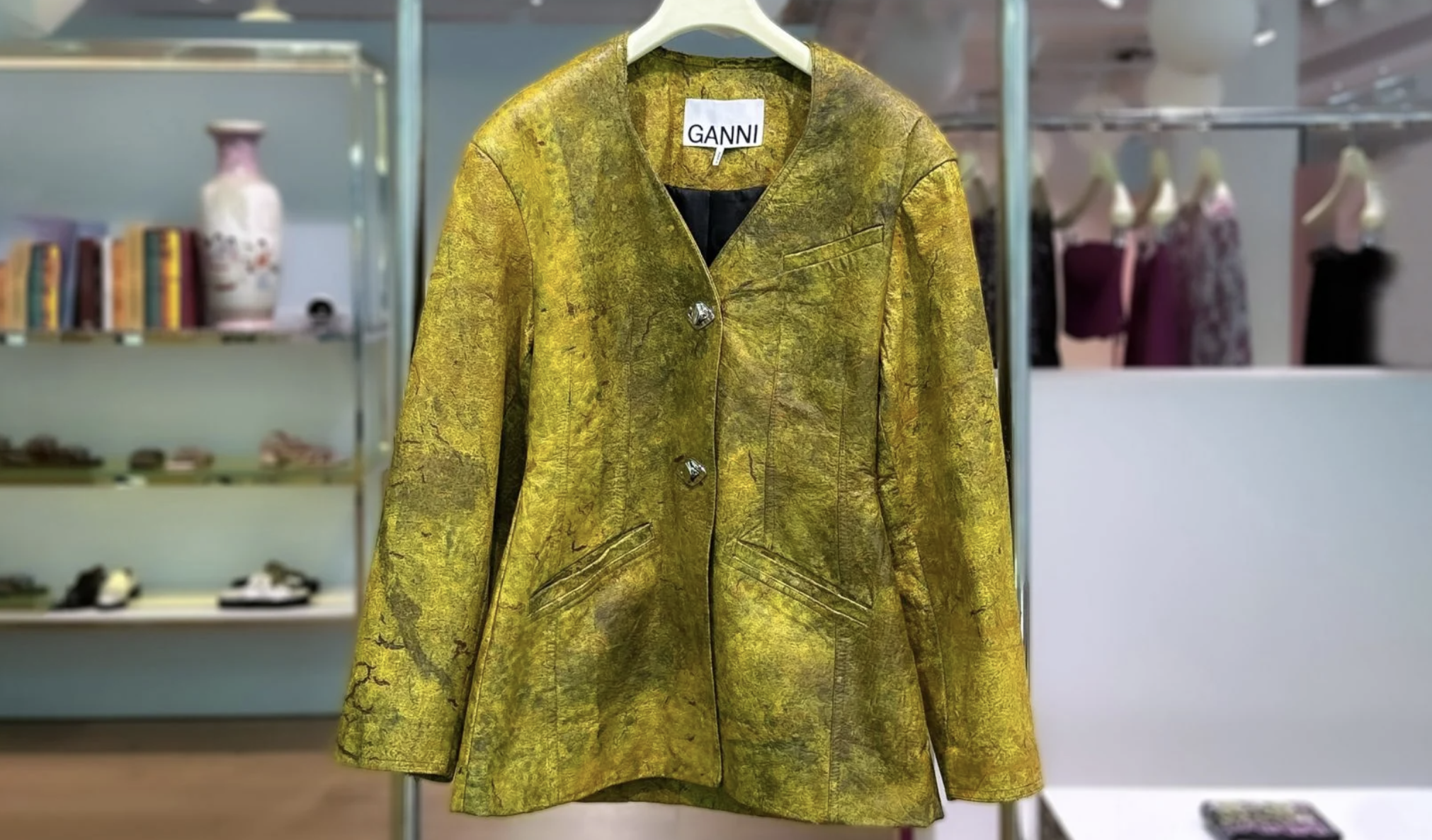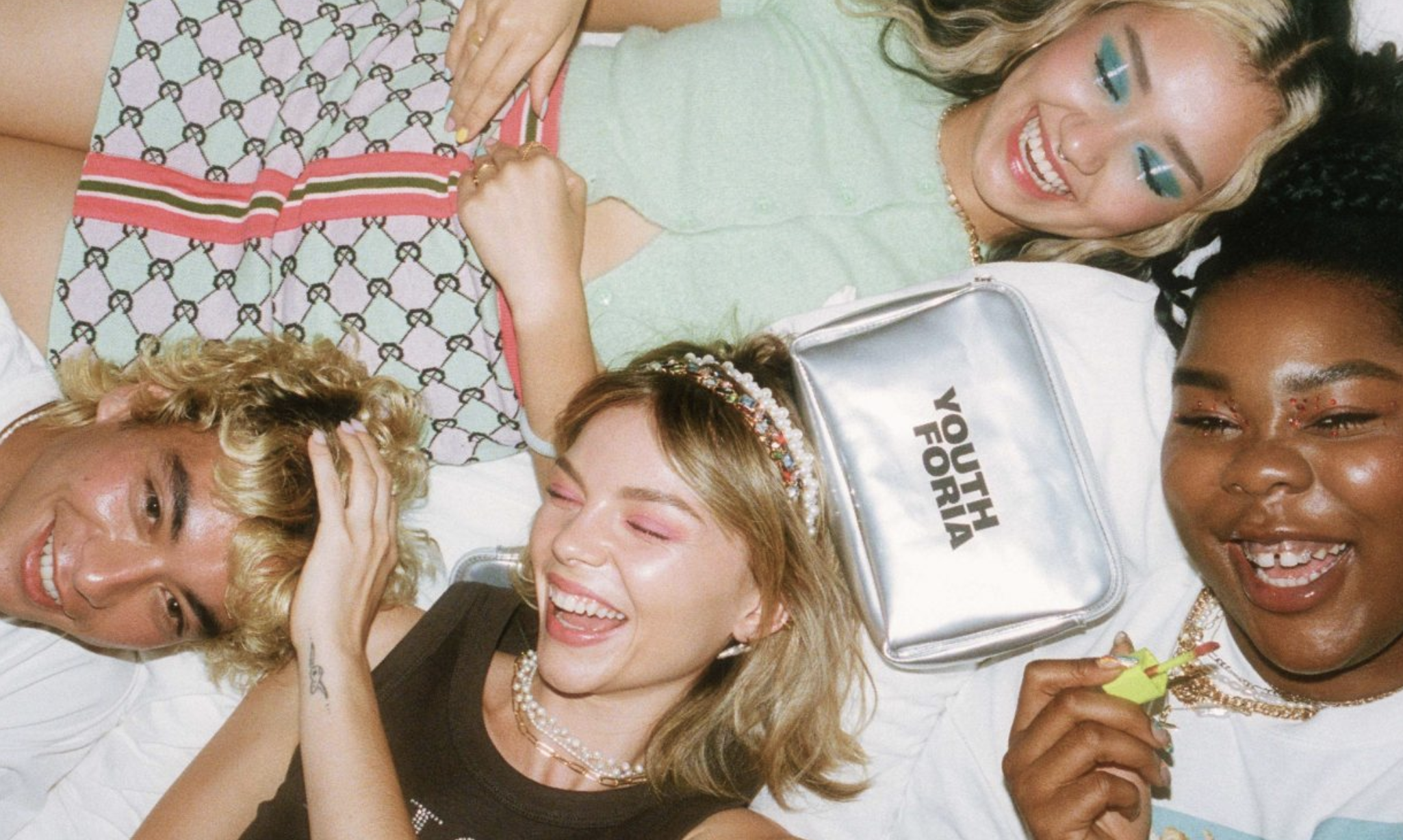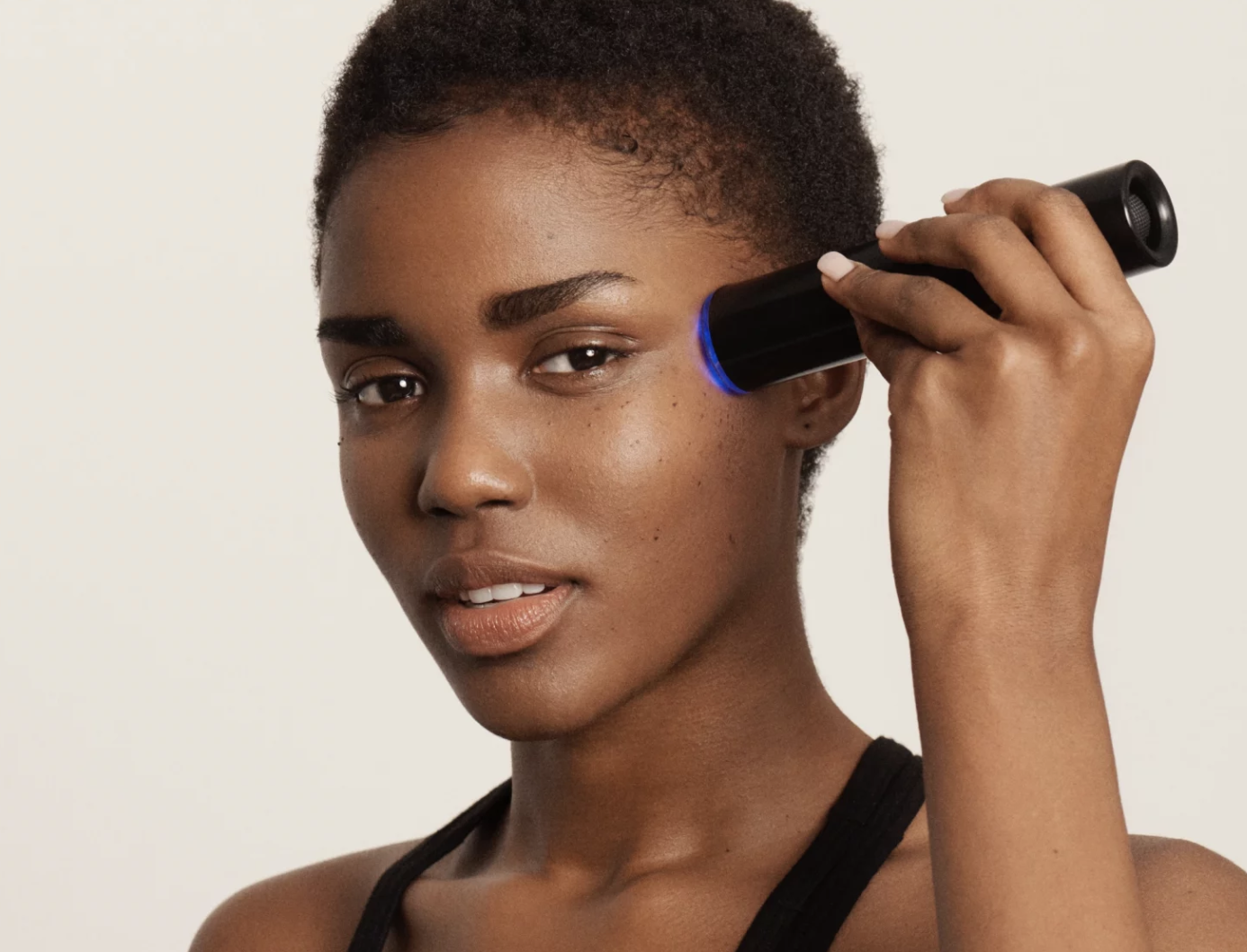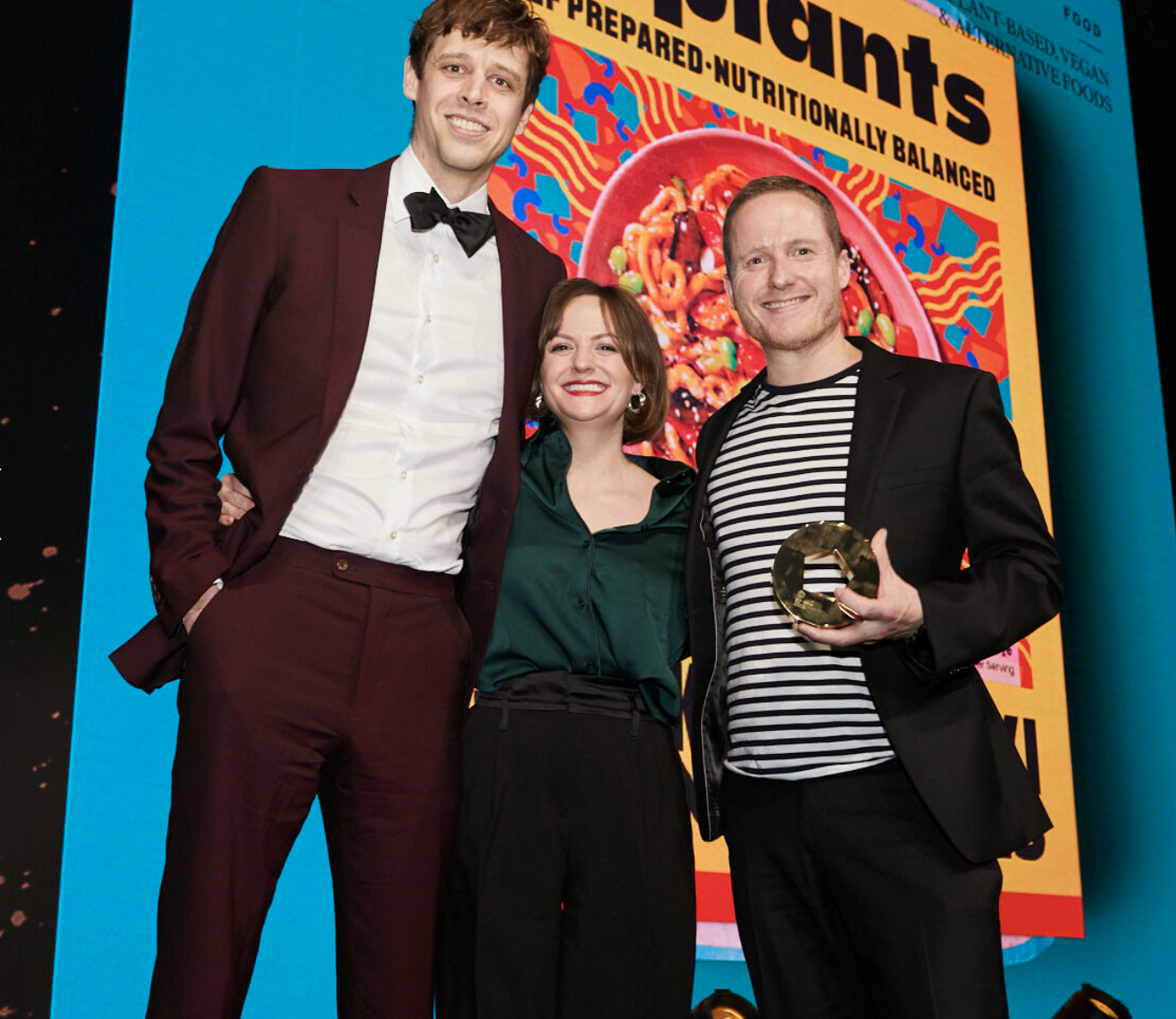Author: Sophie C
How your brand can leverage blockchain technology to build consumer intimacy
Although it has actually been around for many years, Blockchain technology – the decentralised network accounting system of the internet – is now gaining traction and profile with its broader applications outside of cryptocurrency – particularly for brands looking to foster even closer relationships with their audiences.
More brands and businesses are increasingly recognising the validity and value of building Blockchain capability into their strategy or business model, to drive down costs, increase security and speed to market, showcase the supply chain and, significantly, build a better customer experience and connection.
How blockchain technology can increase transparency, traceability and trust:
1. Transparency
Making materials, supply chains and processes immediately accessible, integrated and interactive
Designer watch brand, Nordgreen, is known for its long-term vision to reduce the environmental impact of the watch industry. With The Guardian – a new release of 3,000 super premium and sustainable watches – the brand is taking its vision to the next level through every aspect of the design. But, most notably, an integrated Near Field Communication (NFC) chip elevates the recycled plastic packaging – moving it from a functional and protective role – to become an interactive experience offering information about the packaging production and the recycling process to encourage its community to play an active role in saving the planet.
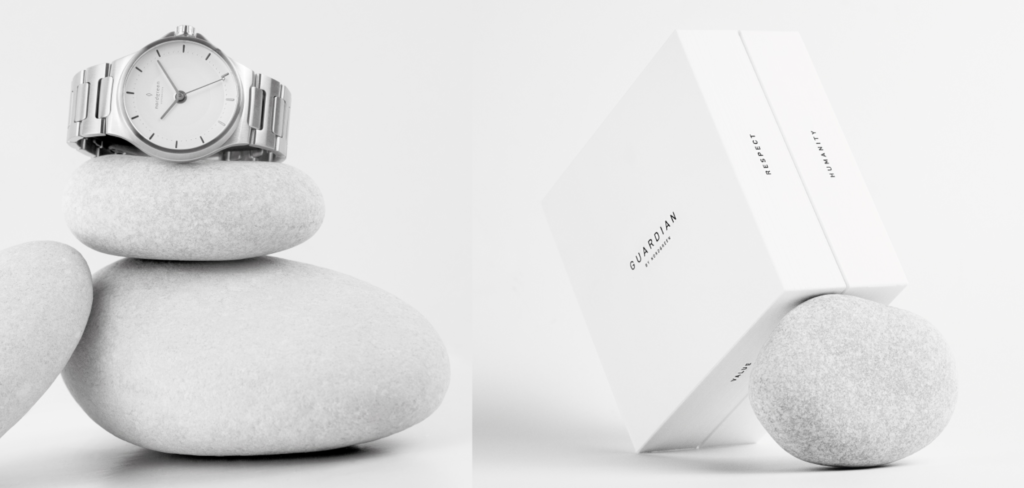
2. Traceability
Ensuring the credibility and security of data and detailed traceability
Danish shoe company Roccamore has taken it’s brand storytelling one step further with Blockchain technology to prove that it is true and traceable.
Scanning a QR code on the inside of the shoe treats the viewer to a journey across a map, where the company relates the steps of the shoe’s journey from where the cow grazed right through to which the factory assembled the shoe. The private blockchain means that only involved business partners can add data to the system – for instance, the tannery Spoor, which provides data on the shoe leather.

3. Trust
Connecting to a known or local source and promising identifiable, personalised or unmediated transactions and information sharing
Today, people want trust-able food and Elke milk is one brand making this a reality by allowing people to choose which cow they want their milk from. A transparent and trusted chain with a pure product, Elke strives to tell the real story of the cow, the farmer and the environment and, ultimately, give the consumer a personalised experience. Milk from each cow is separately stored, processed and bottled. On the label, the name of the cow is given, alongside information about the time of milking, and the amount of fat, lactose and protein of that specific milk so people can choose the milk they like the most. A QR code takes customers to the website to find more information and view their particular cow.

Digital accessibility and interaction are becoming more paramount to the society and culture we are living in – particularly with the arrival of the Metaverse – and leveraging Blockchain capability has the potential to revolutionise the value chain of modern businesses.
However, digital sustainability is also becoming a critical issue for us all. The massive energy use, with for example the Bitcoin blockchain, has certainly been much publicised. But, emerging eco and second-generation blockchains are already overcoming this. A new blockchain tool to track sustainability, GreenToken was recently used by Unilever to track and verify more than 188,000 tonnes of oil palm fruit from plantation to end product. As Natasha Pergl, Global Circular Economy Lead at SAP said:
“Technology such as this allows companies to actually demonstrate that they are delivering against the ambitious sustainability commitments they’ve made in a very practical, actionable way.”
(Source: The Guardian)
From QR codes to NFC chips, it will be up to the individual brand to explore the best route or medium to access this technology and integrate it into their business. But, what is most important to remember is how this technology can enable the creation of distinctive, deliverable and game-changing user experiences that make a more intimate customer connection not just viable – but visible.
There are established private, learning blockchain platforms – from names such as Amazon and IBM – that brands can use to get started with integrating this technology into their business although which to use naturally depends on the design of the experience the brand owner would like to create or how they would like to interact with the product supply chain. But what is most important to remember is how this technology can enable the creation of distinctive, deliverable and game-changing user experiences that make a more intimate customer connection not just viable – but visible.
Four creative trends for the future of confectionery
Confectionery has always been a feel-good category. It reaches far beyond satisfying our basic needs to instead offer moments of joy, stimulation and fun. Even in an increasingly health-conscious world, as much as 70% of consumers say they have eaten chocolate in the past week – making confectionery a global market that is forecast to reach a staggering value of $393 billion by 2028 (source: SkyQuest).
But despite its widespread allure, has a space that was once full of icons and memorable brands started to lose some of its cultural edge? In recent years, breakthrough product development has stalled in favour of an endless stream of limited editions and hype marketing. Meanwhile, innovation has become incremental, with an emphasis on new twists and variants of existing products.
Health has also risen on the agenda. We expect to see more healthy and functional offers, such as the lower calorie-count Mars Triple Treat range. But a snapshot of this sector indicates that people are starting to become overwhelmed by choice and, ironically, not enough difference.
Experts suggest the pandemic and the shift to home-centricity killed much of the category’s spontaneity. It also, however, proved its resilience and age-agnostic appeal, creating new opportunities that have pushed its spontaneous spirit to find new outlets. Now, the digital world is set to become a vital element for the future of indulgence and treating as products compete to stand out in a shifting landscape.
To do this, confectionery must evolve to reflect the true pace of culture, leaning in with high-impact products and experimental flavours and aesthetics. Re-creating the meaningful moments of happiness, connectedness, play and surprise that this category has always been famed for will also be key. Ultimately, success will mean ensuring that creativity becomes a conversation starter, and the new and the familiar join together to bring truly unique and dynamic experiences and sensations.
Here are four creative trends we see inspiring the confectionery industry:
1. Crave-able characters
Brands are bringing their playful and bold attitudes to life – activating them to create fully formed, personable and interactive brand characters, adding layers to their iconicity.
M&M’s ‘spokescandies’ have become confectionery culture icons in their own right. Purple – the latest character, voiced by comedian and talk show host, Amber Ruffin – was introduced in a music video for her new song ‘I’m Just Gonna Be Me’. But Mars Wrigley sparked commentary about ‘wokeness’ following changes to the colourful signature characters, signalling how brand mascots can tap into wider cultural conversations.
What this means for you: Adopt a persona, a voice or create an interactive character – with a point of view and an attitude – to take the brand way beyond the product.

2. Flavour provocateurs
Clever product mash-ups are playing with consumer favourites – testing the limits of their desire, and becoming an object of intrigue and conversation-starters in themselves.
Taco Bell and Milk Bar’s Strawberry Bell Truffle dessert consists of vanilla cake, dotted with bits of strawberry, soaked in strawberry milk and filled with sweet corn fudge. Finished off with a taco shell, its coating adds an unexpected burst of texture to make this a one-of-a-kind eating experience.
What this means for you: Venture into uncomfortable and unexpected crossovers to create playful and novel eating sensations that intrigue through novelty and provocation.
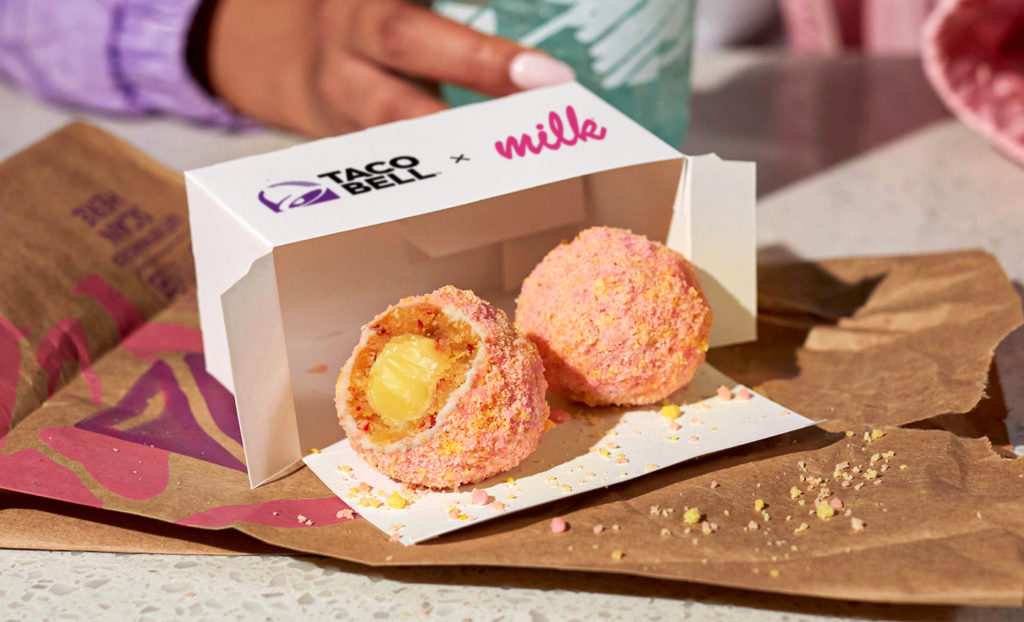
3. Expressing allegiance
In new expressions of loyalty, brands are stretching out-of-category and proudly integrating their products and services as part of wider lifestyle choices.
Hershey’s Reese’s cosmetic collaboration with HipDot was entirely themed around the candy’s equities – being both tinted and scented like the iconic chocolate peanut butter cup. With Reese’s signature colour palette of orange, brown, and yellow as well additional shades named Candy, Peanut Butter and Milk Chocolate, it offered fans a new way to tap their other senses while appreciating the brand.
What this means for you: Liberate and activate assets to engage on multiple levels by integrating them into a wider range of lifestyle products and out-of-category accessories.
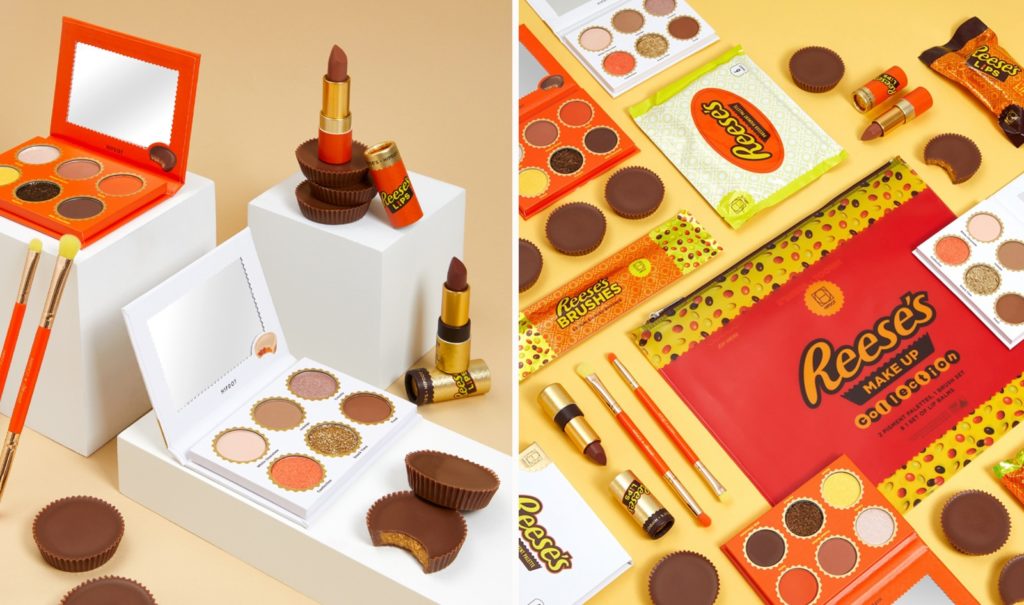
4. Intangible tastes
Experimenting with sensory storytelling and exploring the boundaries of fantasy and flavour, brands are imagining how they can package the abstract and even inedible.
Zero G candies are Skittles first ever blue and purple mix, all wrapped up in intergalactic aluminium packaging, and ‘guaranteed to actually float while in space’ with the brand running a competition giving away a Zero G flight for two to test it out.
What this means for you: Explore the boundaries of fantasy, flavour and storytelling to package new products and imagine abstract new worlds of taste.
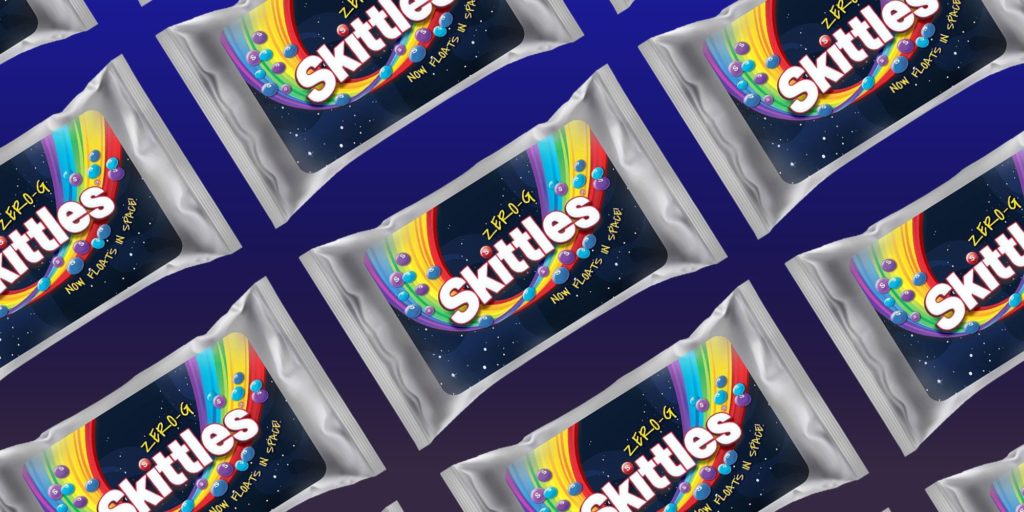
Author: Alex Hawkins, Senior Futures Analyst at Pearlfisher London.
To discover more insights about the confectionery industry, please get in touch:
briefldn@pearlfisher.com
Designing for a Future of Inclusivity
Inclusive design considers the range of human diversity with respect to ability, gender, age, race, biology, orientation, and other forms of difference. But at a time when even the most progressive brands and businesses are not keeping pace or fit for purpose, how do we create imperative change and design for the masses and the individual? In partnership with inspiring thought leaders, Pearlfisher has undertaken its own research to establish a new direction of designing for inclusivity.
According to the World Health Organisation, 15% of the population globally lives with a disability. Meanwhile, between 10% and 20% of people are considered neurodivergent (source: Deloitte). When we also consider the entire spectrum of identity and intersectionality, we begin to understand just how many individuals live in a world that effectively hasn’t been designed for them or with their needs in mind.
Recent years have highlighted increasing inequalities for many marginalised communities, prompting protests, uprisings and greater awareness of diversity. Undoubtedly, businesses face a complex landscape today, as even those with mass appeal feel more pressure to take a stance on potentially divisive issues. In many ways, however, brands are still falling short. According to a report by Vice, just 37% of young people have heard a brand talk about accessibility for people with disabilities. At a time when ability, race and ethnicity, age, sexual orientation, gender and socio-economics all form the dimensions of our identity, even the most progressive brands are often still being seen to fail to address these issues, approaching inclusion without proper understanding.
With this in mind earlier this year, the Pearlfisher Futures team undertook research, specifically into how brands and businesses are approaching and embracing inclusivity through design, realising that to truly be more inclusive in our work, we needed to shape a more purposeful and strategic approach.
With thanks to our collaborators: Sinéad Burke; a consultant, educator, and advocate for disability and design, and founder of Tilting the Lens; Simon Dogger; a blind designer and educator; Floriane Misslin; Design Educator & Visual Sociologist; amongst others, we began to build our perspective and grow our understanding of inclusive design and how this should influence the work we produce with our clients.

As inclusivity becomes a cultural, commercial and creative imperative, designers recognise the need to prioritise products, services and spaces that are more welcoming of all people and all abilities. In a global survey, 75% of respondents said brands must play a role in solving big societal challenges such as equality and social justice (Source: Wunderman Thompson). The creative solutions of tomorrow must be far more multifaceted and push beyond today’s stereotypes and stigmas. Inclusion is now essential, but the question remains: how can brands effectively create and innovate for the real needs of its audience?
Navigating a complex landscape of opportunities
From adaptive packaging to make-up for all skin tones, one sector that has made strides is the beauty industry. Even here, however, there can be a disconnect between intention and action. Skincare brand Olay, for example, released designs for an accessible lid prototype for individuals with limited mobility or dexterity. In terms of producing designs that both cater to the masses while also addressing individual needs, this innovation had the potential to disrupt and influence beyond its own sector, but unfortunately, it was never made widely available.
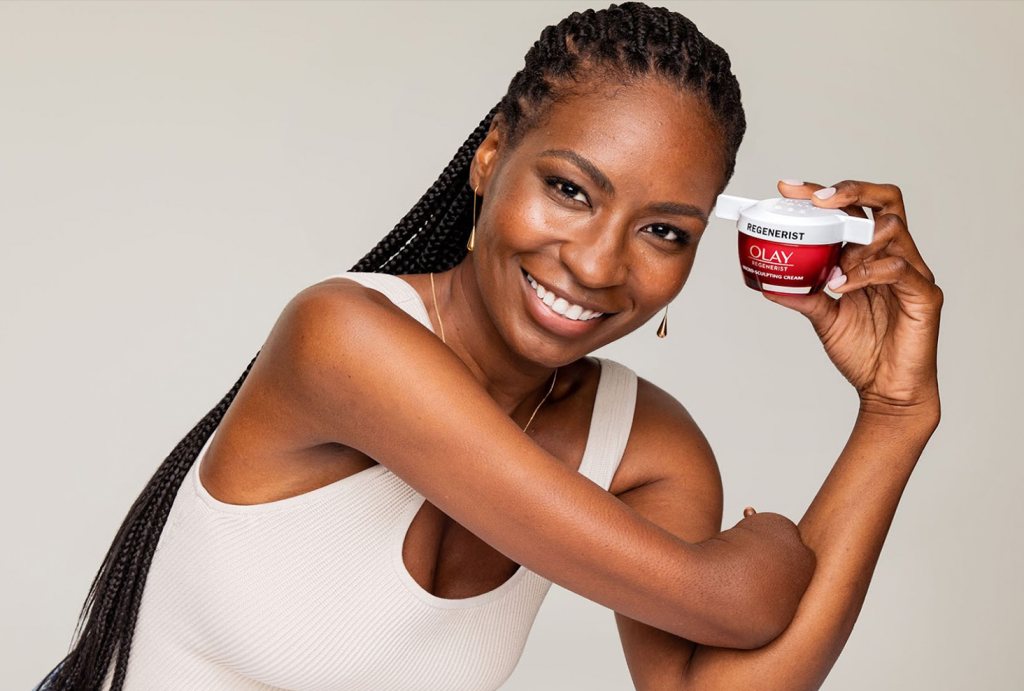
Despite these deficits and challenges, there are numerous opportunities for progress. As pressure grows, the focus of design can shift from product to process with new approaches that embrace inclusivity from end-to-end, such as co-creating with your audience rather than designing for them. To continue moving forward, business and creativity must come together to close gaps between culture, category and consumer.
Shaping the future of inclusive design
“What we’re seeing is accessibility being a vehicle to engage a larger and wider audience,” Sinéad told us. “I think that’s some of the mindset shift that we have begun to participate in, but there’s more to do.” Sinéad sees accessibility as a driver for better products, better innovations, and better design. Better value for everyone.
Embracing the innovation and problem-solving inherent in disability is also a view shared by Simon, who says he is inspired by turning his loss of sight into an advantage. Simon sets out to explore more inclusive forms of communication and uses his unique perspective to design information differently, with both visual and multi-sensory stimuli, to create a better experience of life, for himself, for visually impaired people who live in a visual world – and for all. There is no better research than lived experience, and collaborative design with people with different needs will resonate with much broader audiences.
This underlines the fact that it is crucial to go beyond functional and cultural norms by developing new visual and material languages that make accessible design desirable. Taking this approach can reduce further stigmatisation and avoid othering through design. Additionally, understanding and tapping into the psychological and social dimensions of inclusion, beyond physical impacts, are important to connect with the lived experiences of underserved communities.
“How we design and imagine the future is often based on assumptions that are heteronormative and white or Western-centred. So, how can you be more mindful of these norms in your designs, projects and research?.” – Floriane Misslin, Design Educator & Visual Sociologist
We know that design has the potential to be a powerful force for positive change. To advance inclusivity and ensure more people feel acknowledged and understood, we must approach the needs of a wider range of individuals with care, consideration, and purpose. Challenging established aesthetics, visual codes and use of language in design, marketing and communications. Embracing diverse perspectives in this way will have a transformative impact on the future, resulting not only in more inclusive design, but also better design overall.
To learn more about our research into inclusive design and how we can work together to create solutions for your business that embrace diversity, don’t hesitate to get in touch with us at Pearlfisher London.
Nicole Wilson, Business Development Manager:
nicole.w@pearlfisher.com
Transform Magazine Feature: What if X marks the spot?
Sustainability is more than materials, but it’s a good place to start.
Author: Suzy Shelley, Sustainability & Materials Lead at Pearlfisher London.
As designers, engineers, brand managers and consumers, we have the collective power to affect change by making better decisions – starting with materials.
Around nine years ago, I distinctly remember the first time I saw a piece of packaging that I had worked on polluting our environment; a flow-wrapped plastic sweet wrapper littering a Cornish beach. Before I was Sustainability and Materials Lead at Pearlfisher, I worked for a decade as a product and packaging designer, and seeing the immediate, tangible, and harmful imprint that my work had left on the environment was a chilling revelation. It also made me realise early on in my career that the decisions made during the design and innovation process have lasting consequences.
Research carried out by the Ellen Macarthur Foundation suggests that around 80% of environmental impacts are determined during the design phase [source]. The European Commission estimates that 50% of global greenhouse gases and 90% of biodiversity loss are caused by extracting and processing primary raw materials [source]. The influence of materiality extends beyond beach litter. Its impact permeates the entire lifespan of a product, at all stages of the supply chain, from the extraction of materials to manufacture, transport, use, end of life… and beyond.
Navigating a more sustainable materials strategy requires a careful balance of interconnected factors. There are five key considerations that can guide your approach:
Beyond carbon
It’s difficult to quantify the impact materials have; a common starting point is calculating the carbon footprint. Surprisingly, when comparing the carbon footprint of a single-use PET plastic bottle to aluminium or glass, plastic triumphs. However, this calculation doesn’t take into account challenges such as recyclability, pollution, health hazards, and plastic’s direct link to fossil fuels.
When selecting materials, it’s important not to get carbon tunnel vision. Consider wider impacts alongside CO2e throughout the entire journey of the product.
Half Magic Beauty packages single eyeshadows in PaperFoam, an innovative starch-based pulp alternative. PaperFoam not only has a lower CO2e impact than paper pulp, but it’s lighter-weight, giving advantages in shipping, is home compostable and recyclable with paper giving consumers flexibility at end of life.

Built to last
One of the most sustainable actions we can take is to use things for longer. Single-use items are designed to be made cheaply and used once before being disposed of. The more something is reused, the more its impact is diluted.
Combining durable materials with considered design and quality manufacturing creates products that foster an emotional connection with the user. This ensures items are kept and used many, many times.
Luxury beauty and fragrance are embracing timeless design through reuse and refill. In 2020 Hermes launched Rouge Hermes, a refillable lipstick with heirloom qualities. The durable outer case is crafted from lacquered, polished and brushed metal, with additional protection from a canvas pouch. More recently, Prada launched a stripped-back refill system for the Pradoxe fragrance with infinitely recyclable glass topping up a distinctive triangle-shaped bottle. Pott makes refillable candles hand thrown by skilled potters from around the UK. Each pot is unique and irreplaceable due to its handmade nature.

Recycles forever
Recycling plays an important role in the recovery of materials. However, not all materials are created equally. For example, PET can be recycled 2 to 3 times, whereas glass and aluminium can be recycled infinitely. With glass requiring more energy, aluminium is the preferred choice when it comes to recycling.
Minimising the number of materials used, using widely recycled and infinitely recyclable materials can significantly improve recovery rates.
Brands are embracing aluminium as an alternative to plastics. AKT is a deodorant balm packaged in an aluminium tube. Because of the higher temperatures used during recycling, leftover product, which would cause contamination in plastic recycling systems, is burnt away. Aluminium tubes also usually have a plastic cap, whereas the AKT tube uses aluminium for simplified recycling. Turning liquid soap on its head KanKan uses an aluminium can and reusable pump to create a category-defying, eye-catching packaging system.

Designed to disappear
Composting ranks highly in terms of eco-friendliness with consumers, but with 97% of households in the UK having no access to composting [source] and only 22% of US consumers being aware that industrial composting is needed for most packaging [source] there are barriers to overcome.
Using next-generation materials designed to “disappear” reduces the challenges consumers face when composting.
To coincide with the launch of Tread, their most sustainable sneaker to date, Everlane used Green Cell Foam, a dissolvable corn-based foam, to deliver a unique unboxing experience. GoneShells is a biodegradable material made from potato-inspired fruit peel, tailored to break down under different conditions depending on the contents of the packaging. Mujo packaging is made from kelp, a rapidly growing algae that does not compete with land for food production, bio-degrades quickly, removes CO2 from the atmosphere and cleans ocean water.

Bio-based
Pressure from consumers and government legislation to forego petroleum-based plastic has resulted in a surge of materials from renewable sources. The benefits include lower CO2 as plant-based materials sequester carbon during the growth phase. Additionally, bio-based materials are renewable and contribute to the transition away from our reliance on fossil fuels.
The most environmentally sustainable biomaterials are from a residual resource, organically grown, support regenerative practices, and are free from fossil-fuel ingredients.
From fashion to furniture, brands are embracing bio-alternatives. Glues account for 5% of Ikea’s climate footprint. Earlier this year, Ikea announced a transition to bio-based glues, reducing glue emissions by 40%. In April, Stella Mccartney crafted a jumpsuit from Radiant Matter bio-sequins modelled by Cara Delevingne and featured in Vogue magazine. In July, Danish fashion brand Ganni partnered with materials company Polybion, debuting a jacket grown from bacteria. And ensuring fur is truly guilt-free, Biofluff has developed the world’s first plastic-free, vegan fur, where all of the materials, including dyes, are plant-based.

Sustainability is more than materials, but it is a good place to start. By prioritising material sustainability throughout product life cycles, embracing innovative alternatives, and designing for longevity and recyclability, we can foster significant change. Shifting towards renewable materials and those that ease the burden at end-of-life for both consumers and recycling systems is a further stride in the right direction. Every decision leaves an imprint – are we designing for short-term convenience or long-term sustainability? It’s time to make conscious, responsible choices.
If your current materials strategy has you feeling uncertain, get in touch to sit down with Suzy and discuss the challenges you’re facing. To make an appointment, contact:
nicole.w@pearlfisher.com
Nicole Wilson, Business Development Manager at Pearlfisher London
Life-Centric Brands
So you want to be a lifestyle brand?
If you want to be a lifestyle brand, start by not calling yourself one. Recent brand history is littered with fast-tracked examples which prove that you can’t necessarily sub-brand/shoehorn your way via brand extensions into new territories, especially in the name of being a constantly diversifying ‘lifestyle’ offer. This doesn’t, of course, stop brands coveting what, for many, can seem a nebulous but highly desirable concept.
What is a lifestyle brand:
Because brands that have successfully established themselves in this space are not product-led. Instead, they have gone beyond pure functionality to inspire, motivate and guide their consumers with a culturally definitive concept. Offering solutions which aim to not only answer their needs and answer potential deficits in current categories but also to inspire and enrich their lifestyles in new and unexpected ways. Importantly, they also create a lasting connection by reflecting the same values, interests, attitudes or opinions as their communities and audiences, building aspirations for a better future.
Take US brand YETI as a brilliant example. Post-pandemic, the natural world became a reinvigorated ‘arena’ of opportunity for the lifestyle brand. As consumers ventured back outdoors, and terms like rewilding evolved from a term for ecological restoration to a personal mission, through books with titles like ‘Rewild yourself’, it became clear that the all-important functional to an aspirational spectrum of nature was there for brands to tap into. YETI, credited with ‘igniting a national trend in drink-chilling machismo’ (texasmonthly.com), was established by two brothers who are passionate fishermen, and its colourful, sleek, yet durable drinkware, coolers, bags, and other outdoor gear have been ‘built for the wild’. The brand also forged a network of outdoor ambassadors from hunting and fishing, ranch and rodeo, surf, and skate outdoor enthusiasts to give feedback on the products and held film tours across the US to share human stories about their users, citing the film as a powerful medium for the brand’s marketing. Never losing sight of the fact that creating meaningful, functional products is their core mission, but understanding that they needed a desirable brand image and experience to elevate them above the practical and decidedly unsexy world Tupperware and Thermos had originally established.

Image Credit: YETI
There is a powerful example of how ‘Lifestyle’ brands who create real traction and a true cut-through have been insightful enough to connect with both the day-to-day issues and challenges their consumers face in the world – and design in a way that truly elevates their experiences.
Another example of brands recognising real-life scenarios has been the shift change in Rimowa since being acquired by LVMH. Founded in Cologne 1898 the industrial, aviation-inspired design it is famous for was created in the 1950s to be durable enough to hold expensive equipment for film crews no matter what the conditions of their location were. These days, its luggage is seen in every airport, and the ‘patina’ created by travel is seen as a mark of the seasoned traveller. Its burnished indestructibility has become the ultimate in travel lifestyle and spawned copycat brands like ‘Crash baggage’, which comes with ready-made dents (if you are in too much of a hurry to create your own).
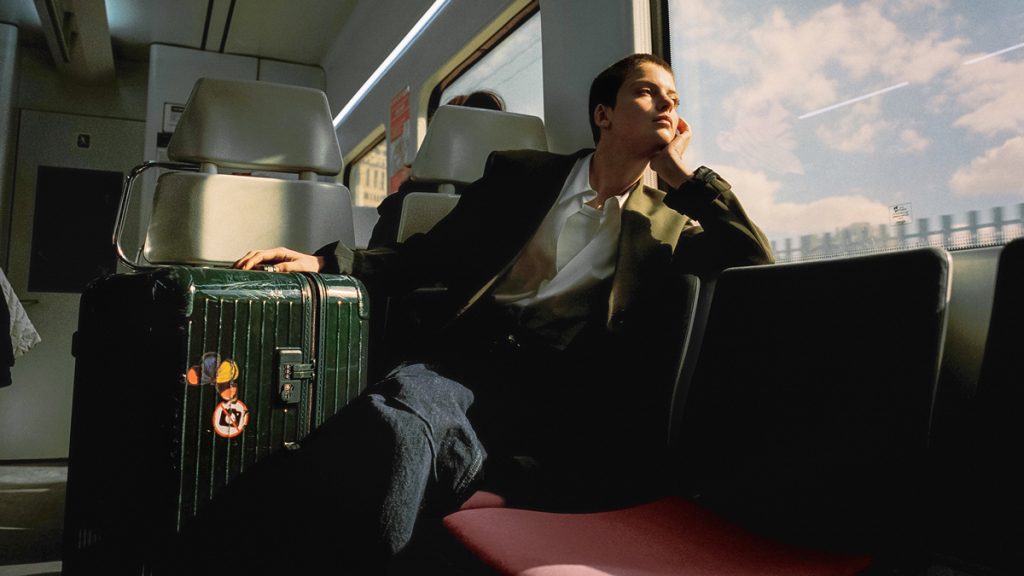
Image Credit: Rimowa
Brands in this space also create compelling worlds for their consumers to enter. Developing technology and capabilities so that they can holistically inhabit people’s online and offline worlds. Again, luxury and premium brands have been front-runners in this space, and not just for newly launching products but as a showcase of their vintage pieces reinforcing past and present globally recognised equity. Gucci Vault is an experimental space that allows its consumers to source both new experimental collaborations with other global designers using Gucci materials and archival pieces restored by its artisans. It describes the vault as a treasure trove of unique objects representing beauty, dreams, passions, and above all, the search for ideas beyond the confines of time and space.
For many, the lifestyle and wellness sectors are almost one and the same, with Goop now being seen as the benchmark for successful brands aspiring to be in the space. Recent rising stars also include beverage brand Kin, and fragrance brand Ffern and Lyma, which spans sectors including supplements, skincare, and lasers.
Kin Euphorics, whose branding earned it the nickname of ‘Goop’s Gen Z’s daughter’ by Vice, is part of the alcohol-free functional beverage movement now bringing a host of benefits, including the easing of stress, boosted energy and better sleep. Co-founder Bella Hadid’s involvement has also helped attract an audience to its health focused nootropics. Ffern, a perfume brand that releases its 100 pure fragrance oils with each new season of the year, has established itself as part of its consumer’s lifestyles with these quarterly releases.

Image Credit: Ffern
Lastly, LYMA® is making major headlines through its cutting-edge, medically approved supplements, medical-grade lasers created for at-home usage, and its newly released serum. All answering the desire for products that use evidence-based science to make a real difference. The serum, in particular, released to much fanfare in June, raises the bar with results that target the epigenetic shift in the skin’s ageing mechanisms – the brand’s legions of celebrity clientele have also not hurt of course.
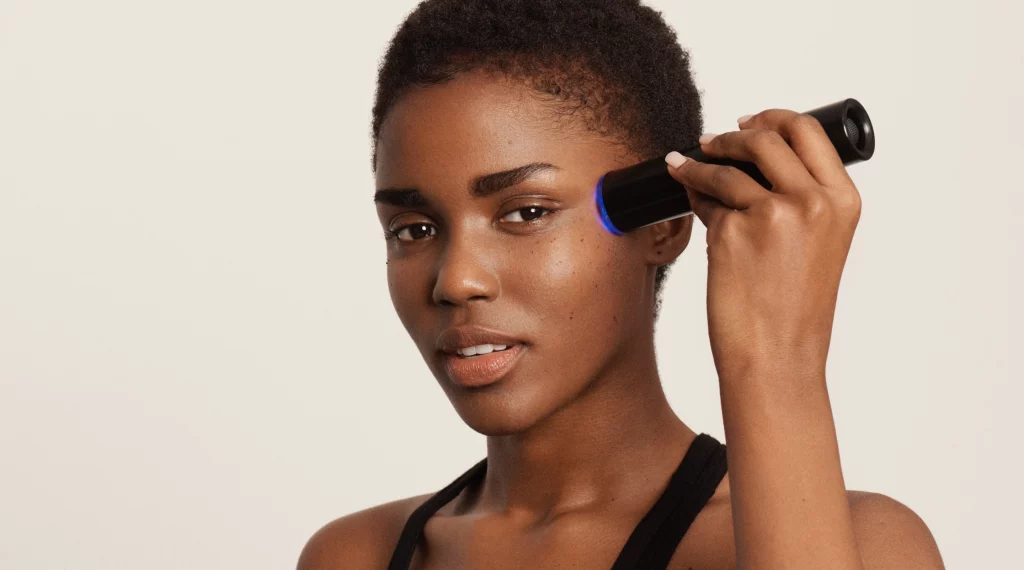
Image Credit: LYMA®
Lifestyle brands are often focused on their consumers’ well-being, but they also need to consider how they meet the impact of consumers’ wider personal, societal, ethical, or economic considerations. Rather than hiding their ethical standpoints, it is now incredibly important for brands to recognise their consumer’s interest in their standpoint and to express their identity, behaviour, and beliefs in a way that consumers can potentially relate to and emotionally engage with.
These brands are all at the leading edge of ‘lifestyle’ branding because they put human needs and desires first to innovate, design and build a world around the multiple visions of living that their audiences now – and in the future will – subscribe to. They are not lifestyle brands – but a part of their future lives.
Get in touch with us today.
To find out more about our work and what we can offer your business, get in touch.

